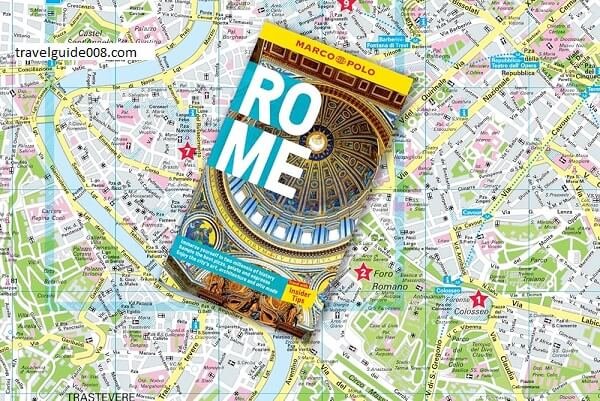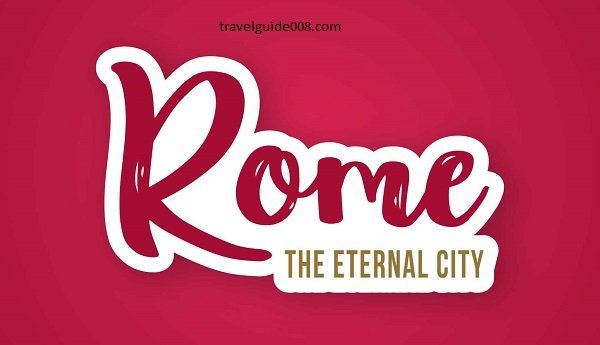Rome Travel Guide Map:
A Journey Through the Eternal City
Rome, known as “The Eternal City,” is where history, culture, and modernity intertwine in a vibrant urban landscape. A city that once ruled an empire, today stands as one of the world’s most enchanting and visited travel destinations. Whether you are a history buff, an art lover, or simply searching for an unforgettable vacation, Rome offers something for everyone. Having a well-planned travel guide and map is essential to make the most of your journey. This guide provides you with a detailed roadmap for navigating the city and uncovering its many wonders.

1. **Arrival in Rome and Getting Around**:
Rome:
Before diving into the treasures of Rome, it’s important to get a sense of how to navigate the city. Rome is serviced by two major airports: **Leonardo da Vinci–Fiumicino Airport** and **Ciampino Airport**, both of which connect travelers to the city via buses, taxis, and the **Leonardo Express Train** (for those landing at Fiumicino). public transport system includes buses, trams, and the **Metro**, which consists of three lines: A, B, and C. For those planning to explore central on foot, the city’s main attractions are relatively close to one another.
Consider investing in a **Roma Pass**, which offers unlimited access to public transport and free or discounted entry to many of the city’s top sites.
2. **Key Areas of Rome: What to See and Where to Go**:
Rome is divided into neighborhoods, each with its unique character and highlights. Here is a breakdown of the must-see areas and their key attractions, which should be marked on your map.
a. **Centro Storico (Historic Center)**:
The **Centro Storico** is the heart of Rome, where many of the city’s most iconic landmarks are located. Walking through these cobbled streets is like stepping back in time.
– **Piazza Navona**: Famous for its Baroque fountains, especially the **Fountain of the Four Rivers** designed by Bernini, Piazza Navona is one of the city’s most vibrant public squares.
– **Pantheon**: One of the best-preserved monuments from ancient , the Pantheon was originally built as a temple to all the gods. Its dome, with a large oculus in the center, remains an architectural marvel.
– **Trevi Fountain**: No trip to is complete without tossing a coin into the **Fontana di Trevi**, one of the most famous fountains in the world. Legend has it that throwing a coin guarantees your return to Rome.
– **Spanish Steps**: Climb the **Scalinata di Trinità dei Monti** (Spanish Steps) for panoramic views of the city, then head to the **Piazza di Spagna** below for luxury shopping.
b. **Vatican City**:
Though technically an independent city-state, **Vatican City** is a must-see on any trip to Rome.
– **St. Peter’s Basilica**: The grandest church in Christendom, **Basilica di San Pietro**, stands as a symbol of the Catholic faith and is a breathtaking masterpiece of Renaissance architecture. Climb to the top of the dome for stunning views of Rome.
– **Vatican Museums**: Home to some of the world’s greatest art collections, the Vatican Museums house the **Sistine Chapel**, where Michelangelo’s famous ceiling frescoes can be admired.
– **St. Peter’s Square**: Designed by **Gian Lorenzo Bernini**, this vast, elliptical piazza is the focal point for papal audiences and a gathering place for pilgrims from around the globe.
c. **Ancient Rome**:
Ancient Rome is a historical treasure trove that takes visitors back to the days of the Roman Empire.
– **Colosseum**: One of Rome’s most recognizable landmarks, the Colosseum is an ancient amphitheater where gladiatorial contests and public spectacles were once held. A guided tour can bring this magnificent structure’s history to life.
– **Roman Forum**: Just next to the Colosseum lies the **Forum Romanum**, the former center of political, religious, and commercial life in ancient . A stroll through the ruins offers a glimpse into daily life in the empire.
– **Palatine Hill**: Overlooking the Forum, **Palatine Hill** is the legendary birthplace of Rome. According to Roman mythology, this is where Romulus founded the city in 753 BC. Today, it offers picturesque gardens and ruins of ancient imperial palaces.

d. **Trastevere**:
This charming, bohemian neighborhood across the Tiber River is known for its narrow, winding streets and vibrant nightlife. **Trastevere** has a distinctly local feel, with its array of traditional Roman trattorias, bars, and small shops.
– **Santa Maria in Trastevere**: One of the oldest churches in Rome, this basilica features stunning mosaics and a rich history dating back to the 3rd century.
– **Janiculum Hill (Gianicolo)**: Climb up to Janiculum Hill for some of the best views of , especially at sunset.
3. **Hidden Gems and Off-the-Beaten-Path Attractions**:
Rome:
While Rome’s iconic landmarks are essential to any visit, countless hidden gems are waiting to be discovered. Here are a few spots worth adding to your itinerary:
– **Villa Borghese Gardens**: For a peaceful escape from the hustle and bustle, explore the beautiful **Villa Borghese Gardens**. The park is also home to the **Galleria Borghese**, which houses a stunning collection of art, including works by Bernini and Caravaggio.
– **Aventine Hill**: Venture to the **Aventine Hill** and visit the **Orange Garden** (Giardino degli Aranci) for another beautiful panoramic view of the city. Don’t miss the **keyhole of the Knights of Malta**, where you can catch a perfectly framed view of St. Peter’s Basilica
4. **Practical Tips for Navigating Rome**:
Rome:
Here are some tips to help you navigate the Eternal City with ease:
– **Best Time to Visit**: is a year-round destination, but the best times to visit are during the **spring** (April to June) and **fall** (September to October) when the weather is mild and the crowds are more manageable.
– **Language**: Italian is the official language, but many people, especially those working in tourism, speak English. It’s always helpful to learn a few basic Italian phrases to enhance your experience.
– **Safety**: While is generally a safe city, be mindful of your belongings, especially in crowded areas like the Colosseum, Vatican, and public transport, as pickpocketing can be an issue.
– **Dress Code**: If you plan to visit religious sites like the Vatican or St. Peter’s Basilica, remember that modest dress is required. This means covering shoulders and knees.
5. **Rome’s Culinary Delights**:
Rome:
Exploring Rome isn’t just about the history and architecture—it’s also about the food! Rome is a paradise for food lovers, and you’ll find everything from local trattorias to fine-dining restaurants. Some classic Roman dishes to try include:
– **Pasta Carbonara**: A creamy pasta dish made with eggs, pecorino cheese, pancetta, and black pepper.
– **Cacio e Pepe**: A simple yet delicious pasta dish featuring just pecorino cheese and black pepper.
– **Supplì**: Fried rice balls filled with mozzarella—perfect for a quick snack.
– **Gelato**: No trip to is complete without sampling Italy’s famous gelato. Some of the best gelaterias are found near **Piazza Navona** and **Trastevere**.

6. **Final Thoughts**:
Rome:
Rome is a city where every street, piazza, and ruin tells a story. With a rich history that spans millennia and an endless array of attractions, it’s a destination that deserves to be explored in depth. Whether you’re marveling at ancient monuments, wandering through picturesque neighborhoods, or savoring the local cuisine, Rome will leave an indelible mark on your heart.
By using this guide and mapping out your visit to the Eternal City, you can make the most of your time and ensure that no corner of is left undiscovered. Whether it’s your first visit or your tenth, always has something new and magical to offer. Happy travels!